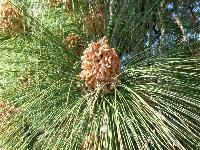
Don Herbison-Evans
(donherbisonevans@yahoo.com)
&
Christine Ashe
|
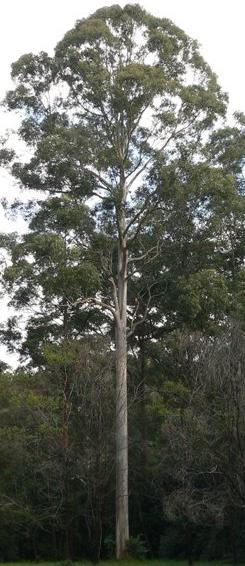
|
Eucalyptus propinqua
H.Deane & Maiden
Grey Gum,
MYRTACEAE
Known as grey gum: there are so many trees given this name
on the east coast of Australia, because there are rather a lot of grey gums.
About ˝ dozen are members of the Grey Gum Group -
rather obviously named for their grey bark.
All members of the group are prized for the strength and durability of their timber,
and in the early days of European settlement were heavily logged for use in construction.
The tree can appear to be a small mallee in tougher sites
where the soil doesn’t quite suit,
but on the Central Coast of New South Wales
it is generally a beautiful tall, elegant tree, 35 m or so high,
with a tall, straight cylindrical trunk.
|
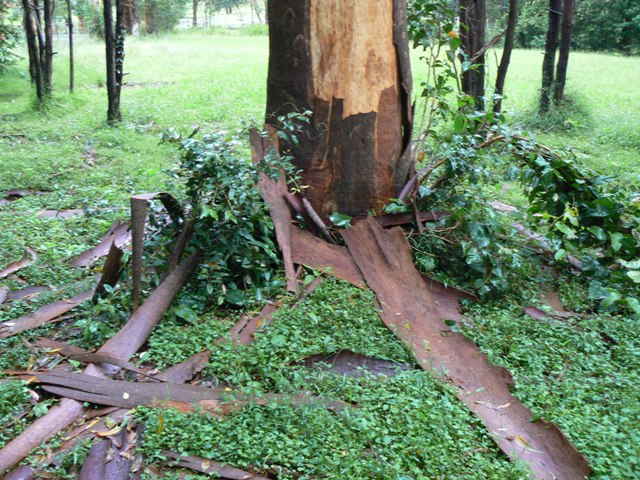
shedding bark
The bark sheds to the ground, there is no collar.
Some people complain about the mess that gum trees leave in their gardens.
It is true that they shed huge quantities of bark,
but only once a year, and it makes wonderful kindling,
is a good weed suppressant, and most importantly,
makes a home for uncountable creatures as it breaks down and becomes soil.
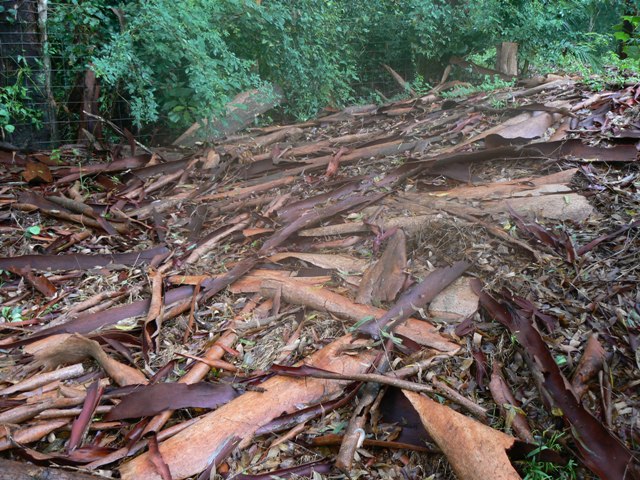
huge quantities of bark
Eucalyptus propinqua can grow to be very large tree
so is not really suited for today’s smaller gardens.
But as long as we hang on to our remnant bushland, you can enjoy them that way,
interspersed with other beautiful gums.
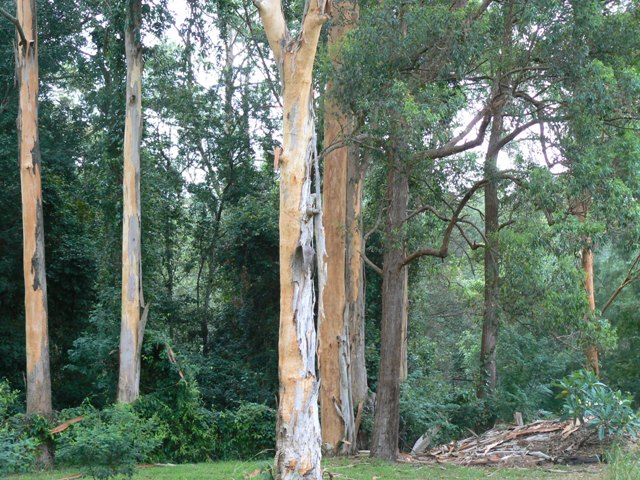
new colours after shedding old bark
The name, grey gum, is a dead give away in what to look out for
in the tree, but in February each year they can surprise.
Most of the time the trunks are a rather uniform, granular surfaced,
mottled grey, but once a year the bark is shed in huge slabs
and displays new colours, ranging from pale cream to light orange.
Then, more occasionally, when the rainfall has been heavy
over spring and summer, the same process is carried out -
but this time displaying a most vivid orange trunk.

orange trunks
In 2008, the grey gums were spectacular. Tall streaks of bright orange
can be seen glowing through the rich greens of the bush.
It really is a spectacular sight for a month or two.
The previous time they looked this good was in 2001,
also following a few months with a lot of rain.
In the afternoon light after a wet day they are just fabulous.
Indeed the right words are: stupendous, gorgeous, fantastic, mind boggling, etc.
It’s the only way to try and get across just how wonderful these trees are.
Once the new bark weathers: the colour fades to a light grey,
and then weathers a little more until
the medium grey is back for the rest of the year.
Then the magic comes to an end.
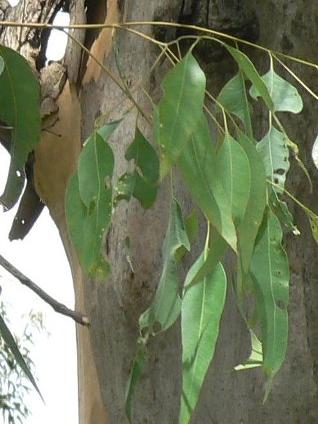
foliage
Like most of the eucalypts on the east coast of Australia
they have broad lanceloate leaves, 14cm x about 3.5cms.
The leaves are discolorous, glossy, green above and lighter below.
The many chewed holes in the leaves attest to the fact that
they are enjoyed by wild life.
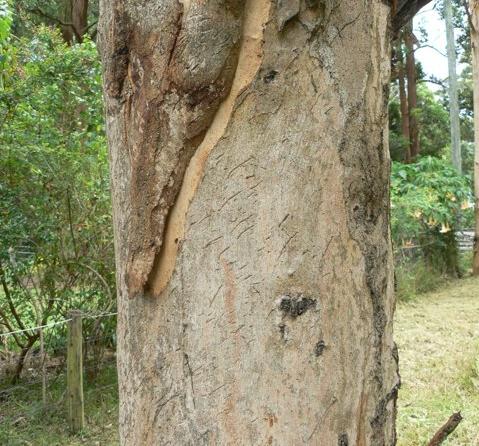
scratched bark
The bark is often covered in scratches too,
probably made by goannas as they patrol the trees
looking for food, birds nests for example.
The trees are also a food source for koalas
so perhaps there is a chance the scratches are their doing.
There have been no sightings of actual koalas in the wild in
the area where these photos were taken (Wyee),
but koalas can be heard calling during mating season, so that remains a possibility.
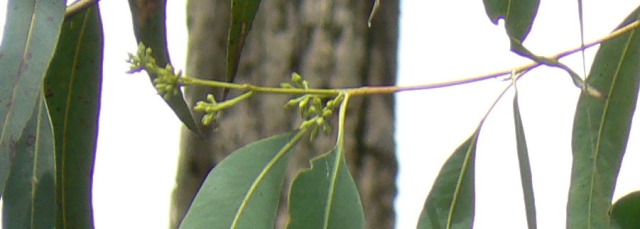
buds
The buds are held in groups of 7 to 15 and are pointy.
There is a scar across where the bud top will fall away
to expose the flower. They flower January to March.
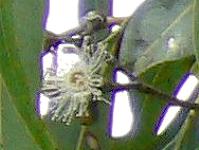
flower
Then the flowers. Like all east coast gums they are white.
In the case of this particular grey gum they are also sparse
and held generally high in the canopy and so the searcher
doesn’t often see them with the naked eye.
It is surprising how easy it is for small white flowers to
blend in with canopy and the sky as you search both.
Lastly the fruit. These hang on the tree for quite a while.
They are small, round and with a cross in the top,
rather like a small round hot cross bun

fruit
Link to
Flowers in Australia
(updated 23 March 2008)




